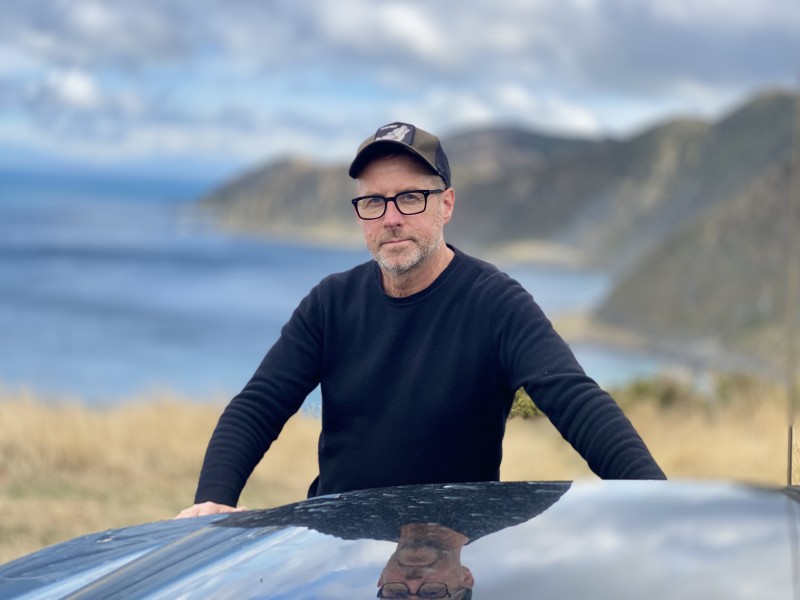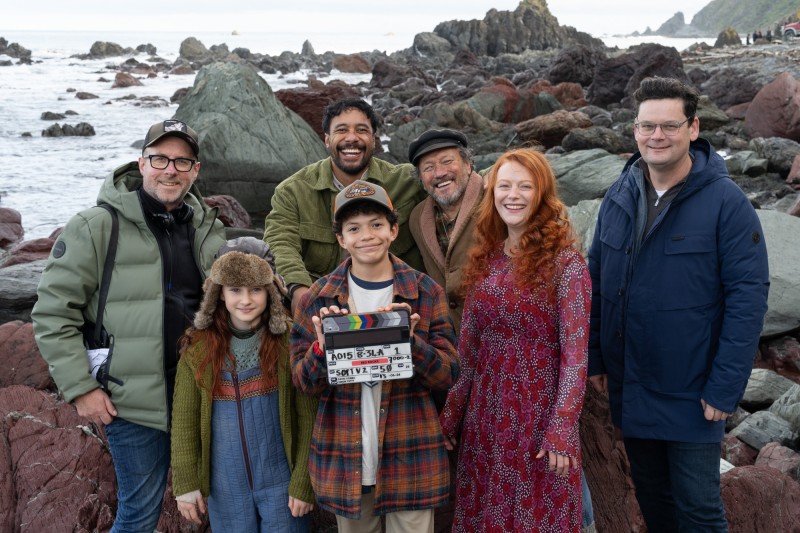

Photo by Rebecca McMillan Photography
Wellington Silver Screeners: David Stubbs by Alessia Belsito-Riera
In our Wellington Silver Screeners series, Alessia Belsito-Riera shines a spotlight on the movers and shakers working in the film capital of New Zealand.
For Emmy Award-winning director David Stubbs, filmmaking is about creating wonderful lies. “We engineer, fabricate, twist, and turn stories – drama, comedy, and documentary – and with a bit of luck the lies will reveal a magical truth,” he says. “Hopefully accompanied by tears, laughter, or goosebumps.”
Wellington born, bred, and based, Stubbs has moved between feature films, television dramas, commercials, documentaries, music videos, and digital projects during his 30-year career in the industry, both here in Wellington and elsewhere. Along the way, he’s collected a commendable catalogue of awards and accolades for his work, including a New Zealand Film Award for Best Director in 2017 and the aforementioned Emmy in 2010. His vast and varied projects, which include Daffodils and Reservoir Hill, have run through local, national, and international film festival circuits. Others still have climbed to number one in the box office or been picked up by Netflix, Neon, and more.
And to think it all began with a cat food commercial, Stubbs muses. I caught up with him just as his latest series, Secrets at Red Rocks – filmed right here in Te Whanganui-a-Tara – began to air on Neon.
Looking back to when you first started out, what sparked your interest in filmmaking and storytelling?
I guess I started out simply wanting to tell stories that affected people. Stories that moved them, scared them, made them laugh, or made them cry. I love the visceral reaction we humans can have to a twist, an honest expression of emotion, or a truth being revealed. Those hair-standing-up-on-your-arm moments. For me, that mostly happens when experiencing things with other people, contemplating art, or listening to music. And that, in a way, describes cinema and quality television. It might sound a bit lofty, but that’s what drives me!
How did you break into the industry?
That was in the golden days here in Wellington. The 80s. I say ‘golden’ because it felt like the industry was becoming a serious proposition. The ragtag bunch behind films like Sleeping Dogs and Goodbye Pork Pie were finding their feet. In Wellington, Marjoribanks Street and its surrounds had dozens of production companies doing ambitious big-budget commercials. Everyone was starting to develop drama projects on the side. And I was a wide-eyed boy from Wainuiomata, soon to graduate from university (with a commerce degree of all things) who hoped I could one day direct a movie.
My break came through a relative who worked in the industry. He introduced me to producer Pat Cox (Footrot Flats), and Pat took a chance on me with a try-out job as the art department runner on a cat food commercial. That was a week after I finished my last exam at uni. Down the rabbit hole I went, and I’ve effectively been a freelancing/self-employed part of the film and television industry ever since.
What have been some career highlights?
In the late 90s and early 2000s I ran Krafthaus Films on Vivian Street. We were successful in making award-winning content for advertisers and marketing clients. On the side we were also producing short films and music videos. Many of the people that passed through the doors at Krafthaus have since gone on to be successful practitioners here and worldwide, so I’m pretty proud to have been a part of their journeys.
As a director, I’m most proud of my two feature films Belief: The Possession of Janet Moses and Daffodils. Both projects were really challenging and crazily ambitious. But both were highly successful, with Belief winning awards, featuring at major film festivals, and selling to Netflix. Daffodils also got a lot of love here in New Zealand and went on to be the biggest independent Kiwi film of 2019. Number one at the box office for a few days too. In the realm of television, highlights include directing the mini-series Black Hands, plus a few years back Thomas Robins and I won an Emmy Award for the hybrid digital/TV drama series Reservoir Hill.
Tell me about your newest show Secrets at Red Rocks. What’s it about for those who haven’t seen it yet?
Recently I directed and produced the family fantasy adventure series Secrets at Red Rocks. All shot here around the spectacular South Coast, especially Ōwhiro Bay and Pariwhero (Red Rocks). It’s about a 12-year-old boy who discovers a selkie’s sealskin hidden in a seaside cave, unwittingly unleashing ancient magic that entangles him in a world of mythical creatures and perilous secrets.
You’ll find it on Sky Open and Neon, and it’s proudly supported by NZ On Air. Secrets at Red Rocks is produced by Libertine Pictures, which is a proudly Wellington-based production company run by Richard Fletcher, Neil Cross, and Nadya Kooznetzoff. Libertine flies under the radar a bit but has some exciting stuff up its sleeve for the future, and is responsible for shows like Under the Vines, Mystic, and they co-produced Daffodils with me.
What was your experience filming in such an iconic Wellington location?
It’s my first job back home in Wellington for almost eight years, after having been working mainly in Auckland and a little bit in Australia. Working with great local collaborators who share my love of the city and its challenges. Plus of course, those South Coast locations were genuinely cinematic and spectacular.
How would you describe Wellington’s film industry?
The truth is that in some ways there are two industries here. There’s the truly epic international stuff being headed by the likes of Peter Jackson, James Cameron, and Wētā (FX and Workshop). Then there’s the relatively more modest industry producing New Zealand features, New Zealand and international co-production television, and, of course, the smaller but very important activity producing commercials, video content, and the like. Sometimes they intersect and creatives and crew will move between both sides. Both these arms of the same industry are world class and successful, and these are real jobs for clever creative and technical people. It’s people actually making stuff. Lots of people, and not a bureaucrat in sight. Often, I’m in Miramar and realise there are still hundreds of people in the local industry that I’ve never met or worked with. Perhaps I need to get out more.
What advice would you give someone trying to get into filmmaking?
Be collaborative, positive, reliable, and prepared to work hard and play the long game. Introduce yourself to the industry by reaching out to others who are working, or by gathering with likeminded people and producing your own stuff. If you know someone who knows someone – leverage that.
What’s next?
We are currently working hard to try and get series two of Secrets at Red Rocks up and running. And, like everyone else, I have projects in various stages of development. Some very personal, some with other filmmakers, writers, and producers, and some as a ‘gun for hire’ for other companies. To make a living as a director or producer – often meaning one show or movie every couple of years – I think you have to constantly have between five to 10 things in various stages of development. That’s generally work you’re doing off your own back and unpaid. So that’s a challenge. Some projects will fizzle out, some need constant attention to evolve and find traction, and some (fingers crossed) just align nicely with what the market is looking for. It’s not for the faint-hearted.
View more articles from:
« Issue 245, June 3, 2025

